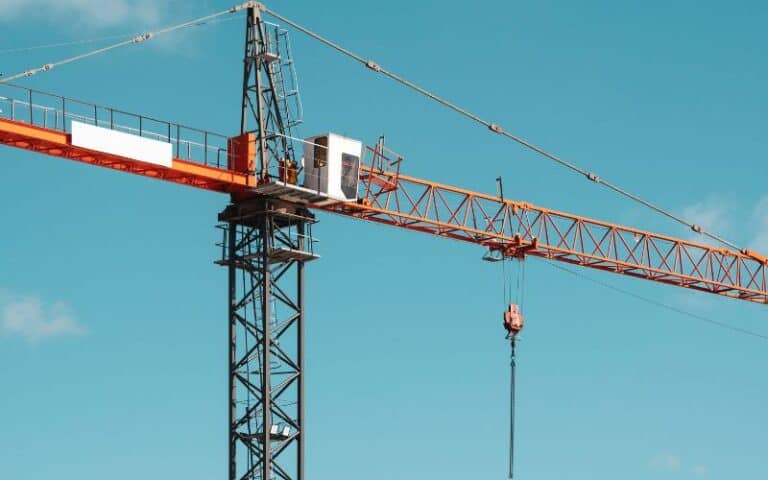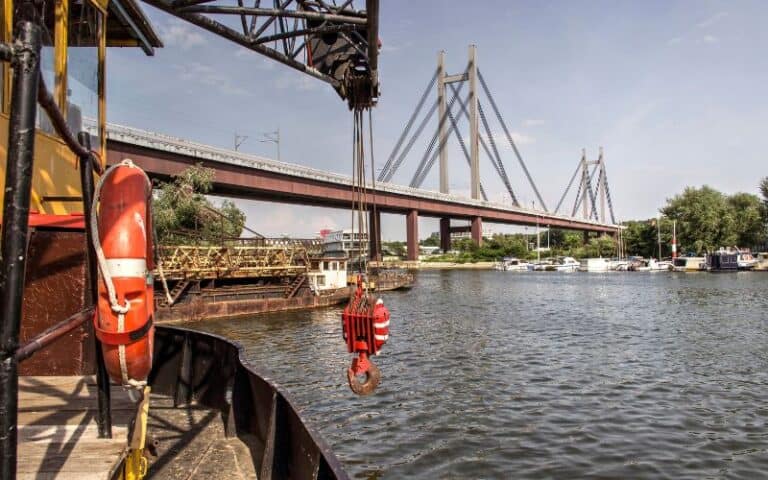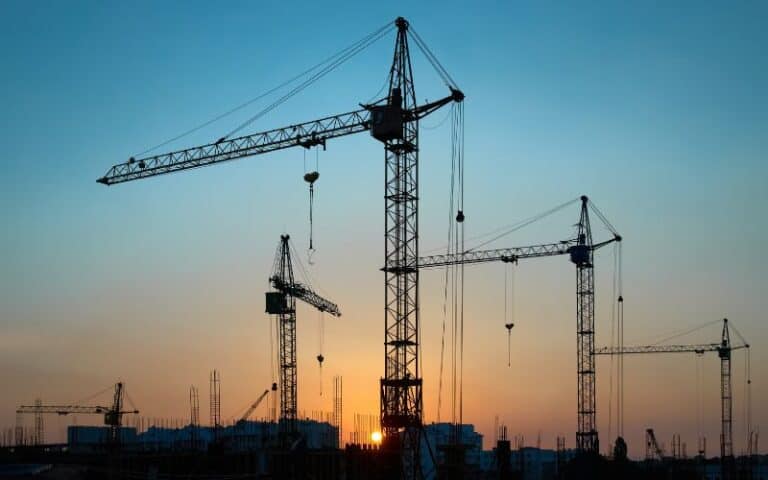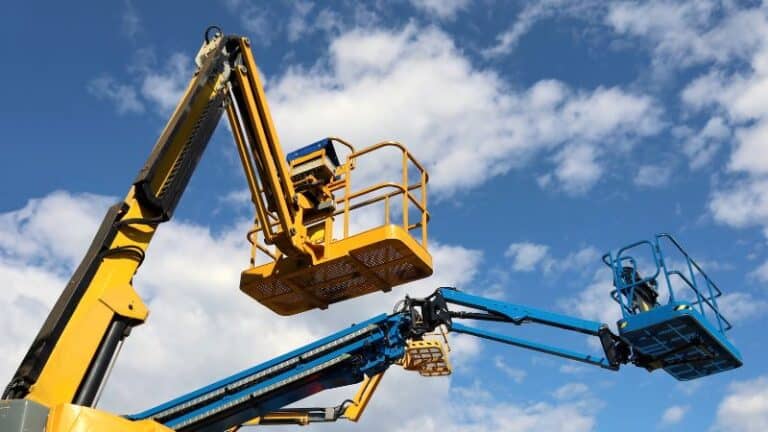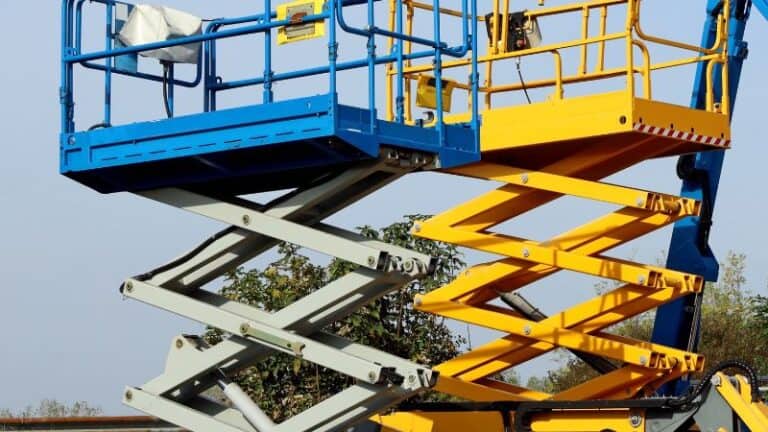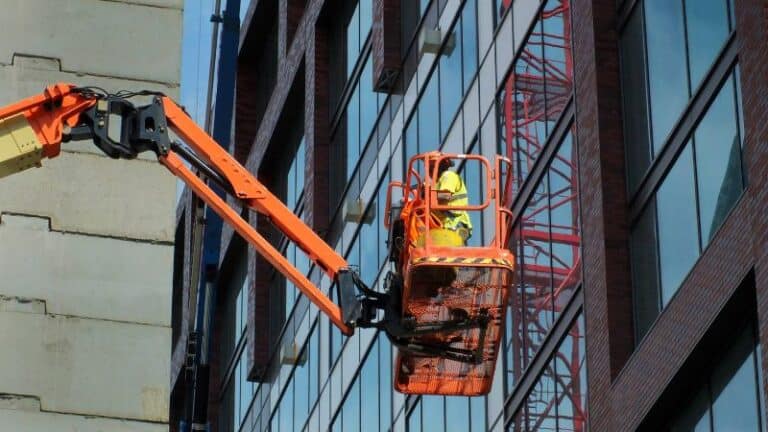When seeing the tower cranes on construction sites, you may wonder how this giant equipment is erected or dismantled. They seem to suddenly appear and disappear in the city. Tower cranes are important. Without them, the construction company can not build large-scale projects or skyscrapers. In this article, we will show you how the tower cranes are erected from A to Z.
By comprehending the basics about tower cranes, you become aware of how vital they are as construction equipment, making it possible to erect the stunning skylines that shape our cities.
The Mainly Erection Process:
- Preparation: A solid foundation is created to ensure stability.
- Assembly: The base is anchored, the mast is built upward in sections, and the slewing unit is added last.
Key Safety Concerns
- Wind Loads: It’s crucial to understand the effect of wind on the crane structure to prevent accidents.
- Regular Maintenance: Ensuring that all parts are in good working condition helps to minimize the risk of malfunctions.
Foundation and Base Configuration
When you’re setting up a tower crane, the starting point is the foundation. This is critical, as it will support the weight and ensure the stability of your crane throughout its operation. A concrete foundation is typically used, designed to handle the load by distributing the crane’s weight evenly.
Anchor bolts play a significant role as well. Before the concrete is poured, these bolts are placed into the ground. After the concrete sets, they are used to secure the crane’s base, which is essential for the overall stability.
Here’s a simplified breakdown:
- Preparation: The ground is prepared to ensure it is level and stable.
- Anchor Bolts: Set into the ground to fasten the base after the concrete is poured.
- Pouring Concrete: This creates the main support structure for your crane.
- Curing Time: Concrete must harden and reach its maximum strength before further construction.
Specific requirements for the base support might vary based on local code, but the principles of creating a solid and secure base remain the same. You want to make sure that your crane’s base has a solid footing that can handle not just the weight of the crane itself, but also the added loads it will lift.
Erection of the Mast and Jib
From the base you made before, the tower mast begins to take form by stacking mast sections one on top of the other. These are typically a lattice structure, and each section is bolted securely to the previous one.
After the base section is secured, lift the important crane tower piece and the core components by mobile crane. The mobile crane can connect and add additional mast sections, like a counter jib and cab, until the desired height is achieved. This tower mast serves as the backbone of the crane, so ensuring it is perfectly level and secured with high-strength steel bolts is critical.
- Slewing Unit / Turntable Installation: This part should be installed on the top of the mast with a gear and motor system for dependable operation, which is responsible for the rotation. It allows the crane to rotate 360 degrees. The slewing unit is the basic part of the cab and lifting components.
- Jib Installation: Your next step is attaching the horizontal jib, a critical component that will carry loads across the construction site. Depending on the type of tower crane, this could be a standard horizontal jib or a luffing jib for tight spaces and high-rise buildings where a fixed jib isn’t practical.
| Jib Type | Features | Use Case |
|---|---|---|
| Horizontal Jib | Fixed position, wide reach. | Open sites, less vertical space restriction. |
| Luffing Jib | Adjustable angle, saves space. | Congested areas, high-rise urban construction. |
- Counterweights: The counterweights are vital for maintaining your tower crane perfectly balanced. You’ll need to calculate the correct amount of counterweight based on your crane’s configuration, ensuring that it can operate without the risk of tipping over.
After those parts are well organized, the tower crane is ready to work.
Introduction of Install Some Crane Mechanisms
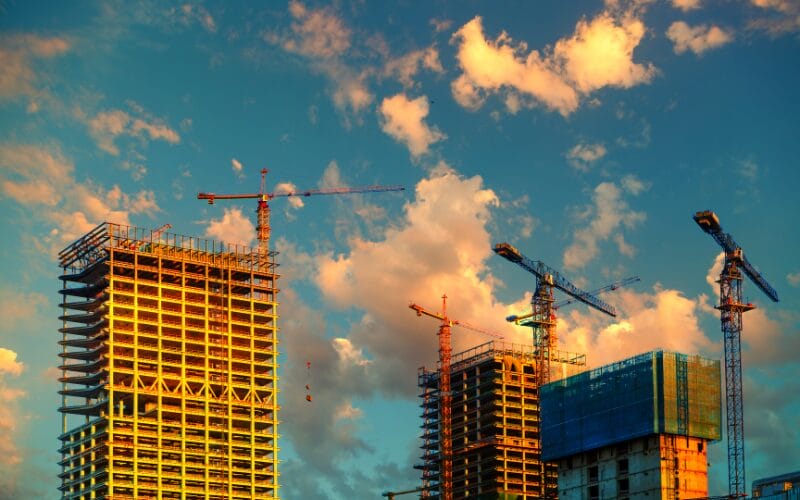
Hoist and Trolley Systems
Your tower crane’s hoist is the muscle behind lifting materials; it operates with a motor, a drum with rope or cable wound around it, and the necessary control systems. Correctly installing the hoist ensures that your crane can lift loads to the desired height reliably. Next, the trolley system, which carries the load horizontally along the jib, needs precise installation. This system consists of wheels and rails, allowing it to move smoothly and position the hook exactly where required.
Climbing Frames and Hydraulic Systems
For cranes that climb as the building increases in height, the climbing frame is a component that enables this upward growth. You’ll install this just above the lower crane segment. The hydraulic cylinder within the climbing frame is then activated to lift the top part of the crane, inserting another tower section underneath. This climbing process is repeated, allowing your crane to reach higher as the structure it’s building ascends.
Logistics, Maintenance, and Dismantling
How to Maintain Your Tower Crane:
- Perform regular inspections and maintenance as directed by the manufacturer’s guidelines.
- Check for signs of wear, corrosion, and structural integrity.
- Keep a detailed log of all checks and maintenance work for compliance with safety standards.
| Activity | Frequency | Checklist |
|---|---|---|
| Visual Inspection | Daily | – Bolts and connectors – Structural deformities |
| Preventive Maintenance | Monthly/Quarterly | – Lubrication of moving parts – Electrical systems check |
| Comprehensive Exam | Annually | – Load testing – Mechanical and structural components |
Dismantling:
- Plan ahead for the crane removal, ensuring minimal disruption to the surrounding area.
- Disassemble the crane in the reverse order of assembly.
- Be particularly cautious when releasing the high-strength steel bolts and removing large sections.
In summary, the erection and dismantling of tower cranes is a complex process that requires careful planning, qualified personnel, and strict adherence to safety procedures.
Throughout the process, it’s critical to have detailed engineered plans, conduct risk assessments, hold safety briefings, and have competent persons oversee the work. Hazards like falls, electrical contact, and falling objects must be mitigated through proper planning, communication, and protective measures.
Technological advancements like anti-collision systems and telematics are enhancing crane safety. But at the end of the day, erecting and dismantling tower cranes safely comes down to qualified people following well-designed plans and procedures. With the construction industry relying so heavily on these lifting workhorses, there is no room for shortcuts or carelessness when it comes to tower crane erection and dismantling. Lives and project success depend on getting it right.
Beijing Ihurmo Industry Co., Ltd. is a premier supplier of tower cranes. Our professionals will give you a full guide if you have any needs for installing cranes. Don’t hesitate to contact us. Trust IHURMO to add new energy to your work and elevate your construction projects to new heights.
Frequently Asked Questions
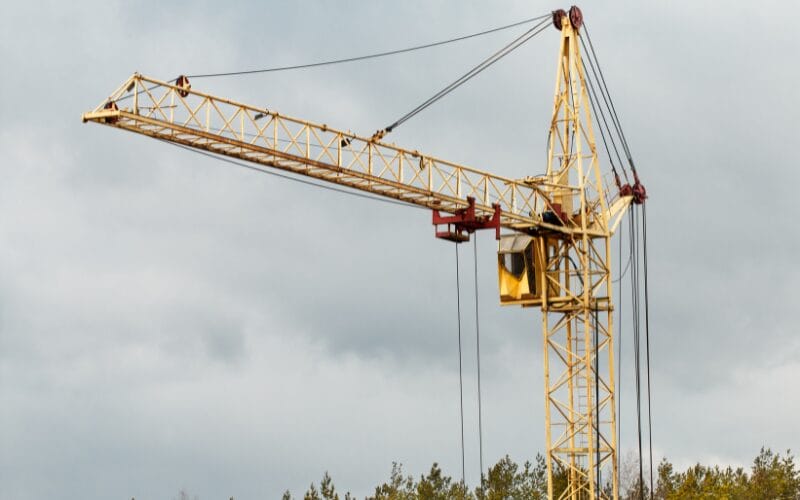
How long is the typical timeline for erecting a tower crane on a construction site?
The timeline for erecting a tower crane typically spans several days. The exact duration depends on the crane size, crew experience, and site conditions. Preparing the foundation and assembling the crane can take around 2-3 days under optimal conditions.
What are the techniques used to dismantle a tower crane from the top of a building?
Dismantling a tower crane involves reversing the assembly process. The sections are detached and lowered, often using a derrick or another crane. For high-rise buildings, cranes are sometimes dismantled floor by floor as the building’s height decreases.
How can the height of a tower crane be increased during construction?
To increase a tower crane’s height, a process called “climbing” is used. The crane lifts its own mast sections into place, either from inside the building or through the “top climbing” method, where new sections are inserted above the slewing unit.
What methods ensure a tower crane’s stability once it is constructed?
Once erected, a tower crane’s stability is ensured by careful calculation of weight distribution and leverage. The crane’s design includes counterweights and structural reinforcements. Regular maintenance and inspections are crucial for ongoing stability.

